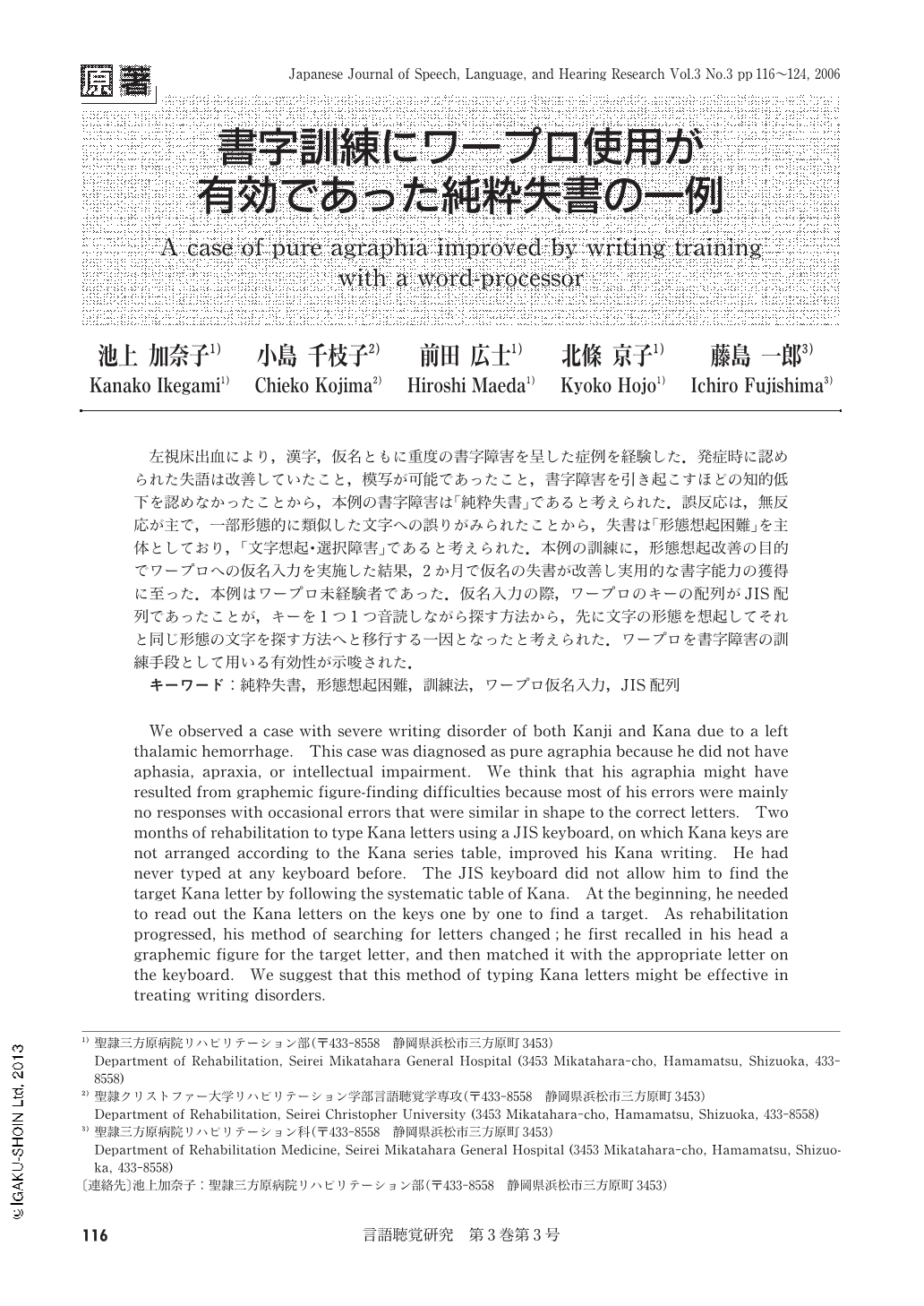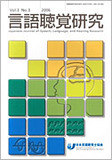Japanese
English
- 有料閲覧
- Abstract 文献概要
- 1ページ目 Look Inside
- 参考文献 Reference
左視床出血により,漢字,仮名ともに重度の書字障害を呈した症例を経験した.発症時に認められた失語は改善していたこと,模写が可能であったこと,書字障害を引き起こすほどの知的低下を認めなかったことから,本例の書字障害は「純粋失書」であると考えられた.誤反応は,無反応が主で,一部形態的に類似した文字への誤りがみられたことから,失書は「形態想起困難」を主体としており,「文字想起・選択障害」であると考えられた.本例の訓練に,形態想起改善の目的でワープロへの仮名入力を実施した結果,2か月で仮名の失書が改善し実用的な書字能力の獲得に至った.本例はワープロ未経験者であった.仮名入力の際,ワープロのキーの配列がJIS配列であったことが,キーを1つ1つ音読しながら探す方法から,先に文字の形態を想起してそれと同じ形態の文字を探す方法へと移行する一因となったと考えられた.ワープロを書字障害の訓練手段として用いる有効性が示唆された.
We observed a case with severe writing disorder of both Kanji and Kana due to a left thalamic hemorrhage. This case was diagnosed as pure agraphia because he did not have aphasia, apraxia, or intellectual impairment. We think that his agraphia might have resulted from graphemic figure-finding difficulties because most of his errors were mainly no responses with occasional errors that were similar in shape to the correct letters. Two months of rehabilitation to type Kana letters using a JIS keyboard, on which Kana keys are not arranged according to the Kana series table, improved his Kana writing. He had never typed at any keyboard before. The JIS keyboard did not allow him to find the target Kana letter by following the systematic table of Kana. At the beginning, he needed to read out the Kana letters on the keys one by one to find a target. As rehabilitation progressed, his method of searching for letters changed;he first recalled in his head a graphemic figure for the target letter, and then matched it with the appropriate letter on the keyboard. We suggest that this method of typing Kana letters might be effective in treating writing disorders.

Copyright © 2006, Japanese Association of Speech-Language-Hearing Therapists. All rights reserved.


